
 |
| HOME - Land Introduction - The Lands - Where The Lands Lived in Leeds |
| The Old Parish Church | |
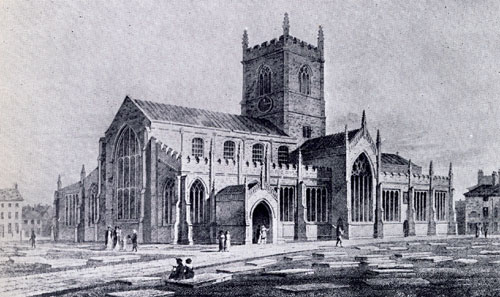
| The old parish church Benjamin Law and Lydia Sheard were married in this church in 1801. |
| Changing Leeds | |
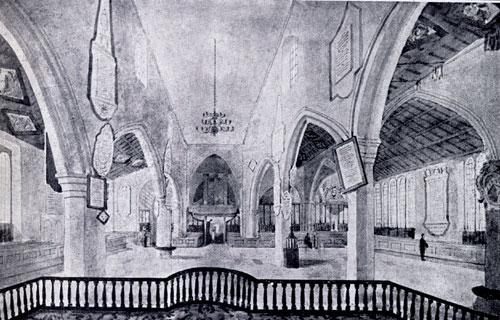 |
The chancel of the old parish church The old parish church was demolished in 1837.
|
| Changing Leeds | |
| The New Parish Church | |
 |
St Peter's the new parish church 1841 from the south east.
|
| Leodis, Leeds Library | |
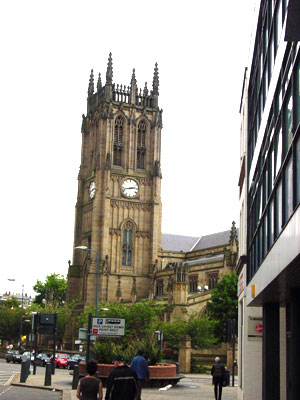 |
St Peter's the new parish church, 2002 From the west. In his welcome to "Leeds Parish Church" the rector says "The present church was built in 1841 to express the grace and compassion of God at a time when the surrounding area was a huddled mass of squalid housing and money was scarce." |
| Photo Tom Blanck, 2002 | |
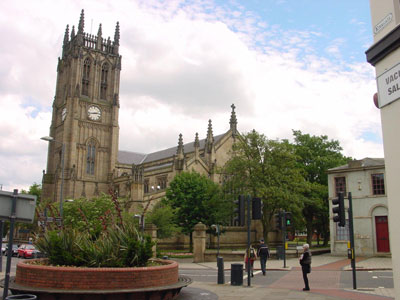 |
The parish church of St Peter In the 19th century Anglicanism in Leeds was weak. Many people attended the new protestant non-conformist chapels. Charles Land and Ann Dinsdall were members of the Queen's Street Chapel.
|
| Photo Tom Blanck, 2002 | |
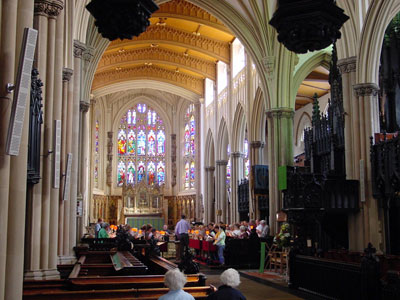 |
Interior of the parish church of St Peter
|
| Photo Tom Blanck, 2002 | |
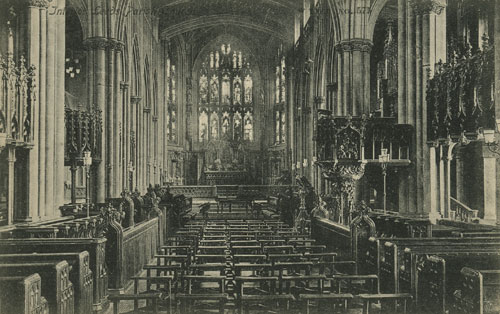 |
Interior of the parish church of St Peter
|
| Postcard collection of Maggie Land Blanck | |
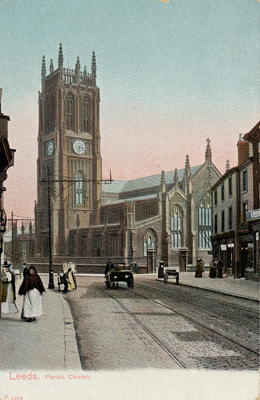 |
Leeds Parish Church. No date.
|
| Postcard collection of Maggie Land Blanck | |

| Parish Church Leeds. No date.
|
| Postcard collection of Maggie Land Blanck | |
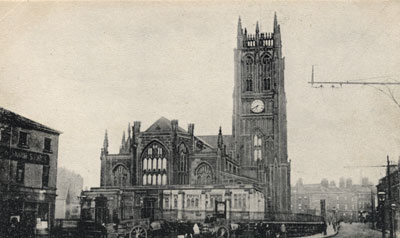 |
Another view of the Parish Church Leeds.
No date.
|
| Postcard collection of Maggie Land Blanck | |
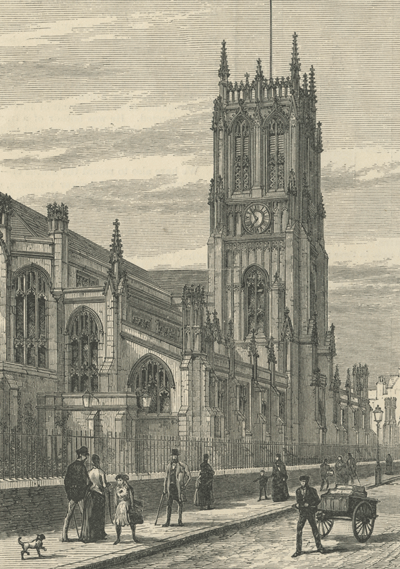 |
|
| Print
collection of Maggie Land Blanck
THE OLD PARISH CHURCH, LEEDS Illustrated London News, June 18, 1885 | |
| The Town Hall | |
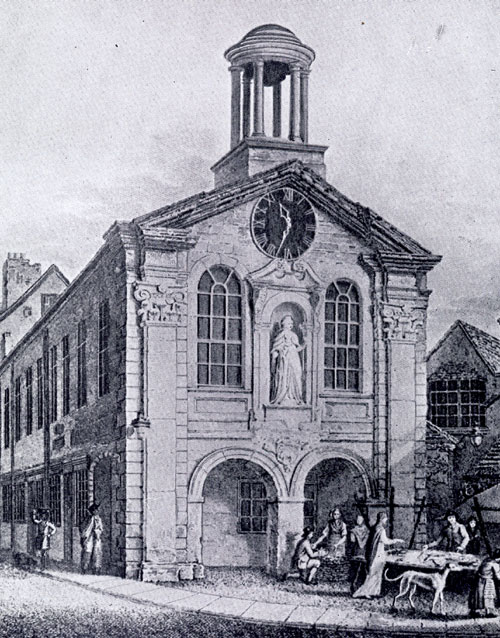 |
The Old Leeds Town Hall |
| Changing Leeds | |
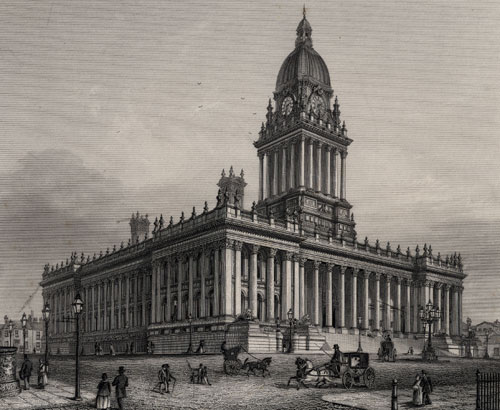
| New Town Hall, Leeds
|
| Print collection of Maggie Land Blanck | |
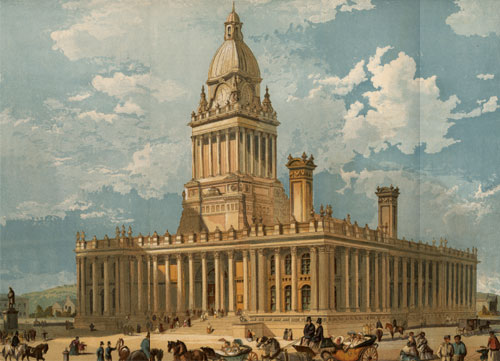 |
The New Town Hall Leeds, Illustrated LondonNews Supplement Sept 11, 1858 |
| Print collection of Maggie Land Blanck
The Illustrated London News of September 11, 1858 stated that Leeds was the "largest and most flourishing" city in Yorkshire, the fifth in England "in point of population and commercial activity. The population in 1851 was 172,270. The number of inhabited houses in 1851 was 36,165.
| |
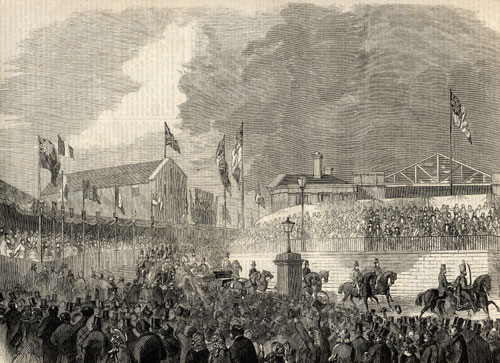 |
"The Queen's Visit to Leeds-
Her Majesty leaving the railway station en route to Woodsley House"
Leed's town Hall was opened by Queen Victoria in September 1858. It was the first time a reigning monarch had visited Leeds. |
| Print collection of Maggie Land Blanck | |
| Lower Briggate | |
 | |
| Leodis, Leeds Library | |
| Boar Lane | |
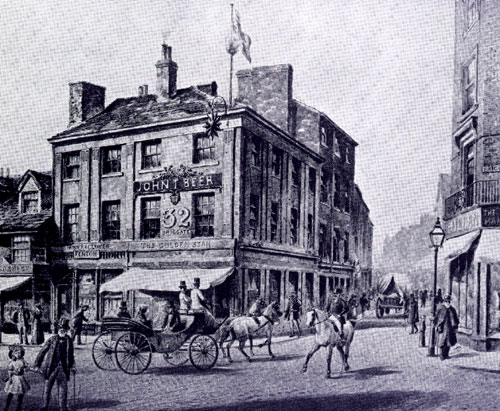 |
Boar Lane mid 1800s
|
| Changing Leeds | |
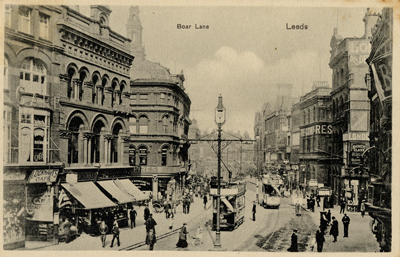
| Boar Lane, Leeds |
| Postcard collection of Maggie Land Blanck | |
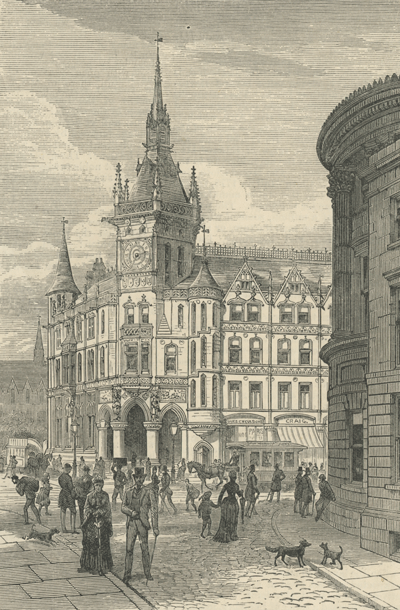 |
|
| Print
collection of Maggie Land Blanck
THE ROYAL EXCAHNGE, LEEDS Illustrated London News, June 18, 1885 | |

| |
| Print
collection of Maggie Land Blanck
BOAR LANE, LEEDS Illustrated London News, June 18, 1885 | |
| The Briggate | |
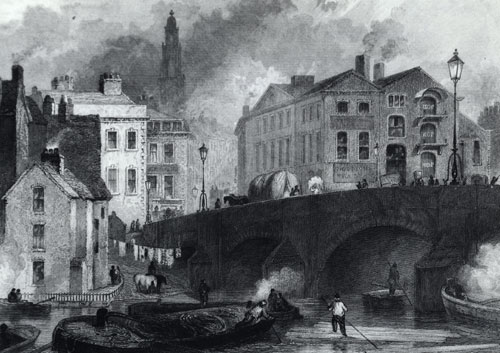
|
Briggate 1849Looking north to the entrance of Briggate and the old Leeds Bridge Engraver, T. A. Prior
|
| Leodis, Leeds Library | |
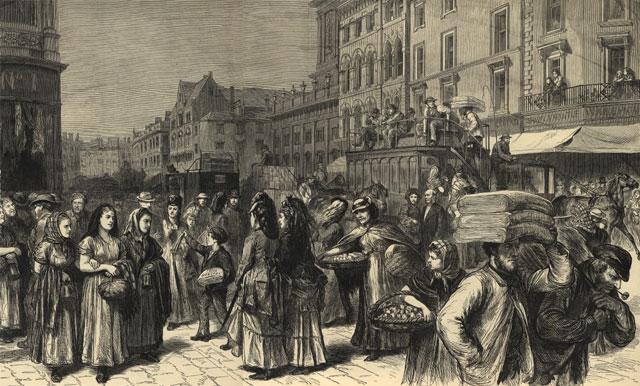 | |
| Print collection of Maggie Land Blanck | |
| Leeds on a Market Day, 1872
A Sketch in Boar Lane and Briggate
| |
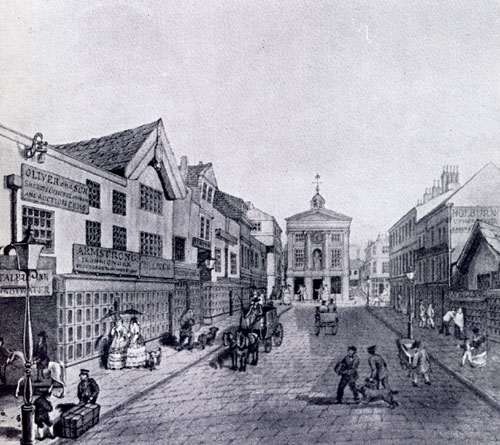 |
Briggate, 1851 The building in the center was the Old Corn Exchange |
| Changing Leeds | |
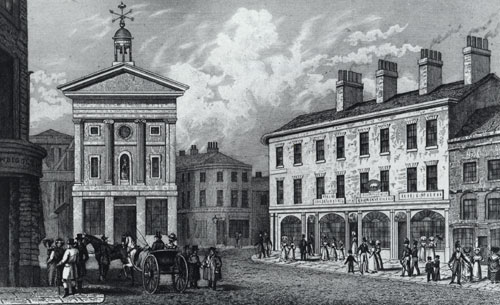
|
Corn Exchange at the top of the Briggate, 1829. Drawn by N. Whittock
|
| Leodis, Leeds Library | |
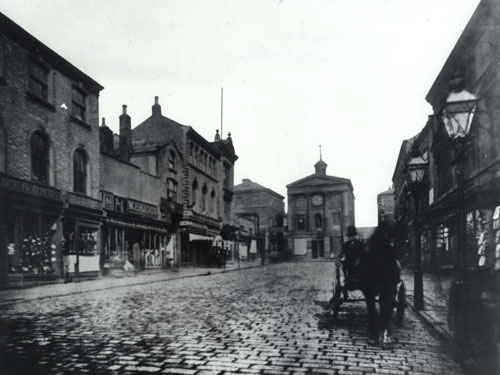
|
Upper Briggate and the Old Corn Exchange, 1860
|
| Leodis, Leeds Library | |
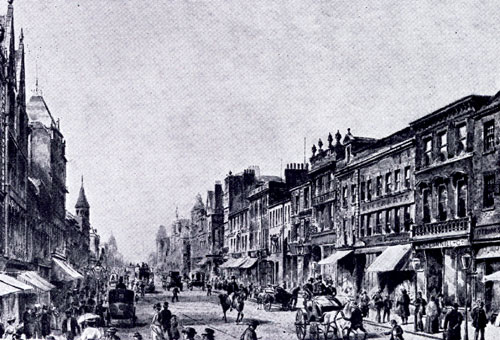 |
Briggate, date unknown.
The Corn Exchange was
demolished to develope Upper Briggate
|
| Changing Leeds | |
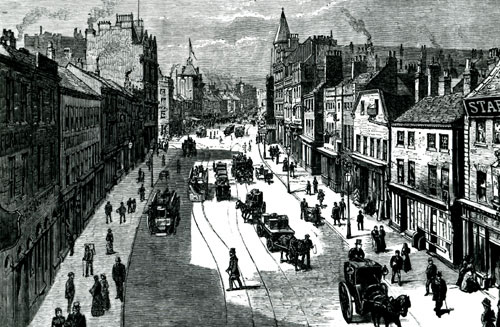 |
The Briggate looking north from the railway
bridge, 1885
|
| Leodis, Leed Library | |

| Briggate, Leeds |
| Postcard collection of Maggie Land Blanck | |

| Briggate, Leeds Postmarked 1905 |
| Postcard collection of Maggie Land Blanck | |
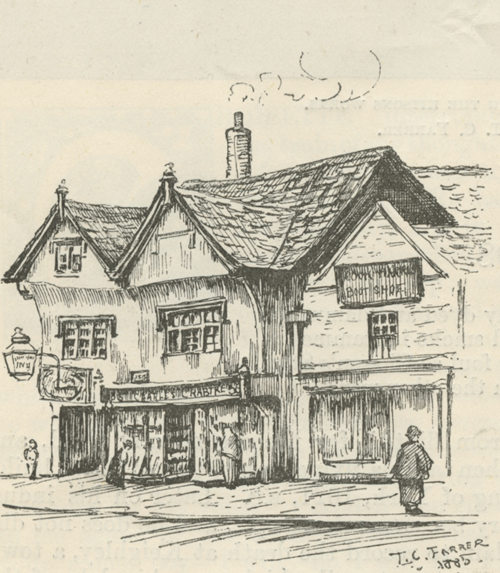
| OLD HOUSES IN BRIGGATE,
LEEDS DATEDD R. S. 1513 from a Drawing by T. C. Farrer
|
| Collection of Maggie Land Blanck English Illustrated, March 1889 |
|
| The City Square | |
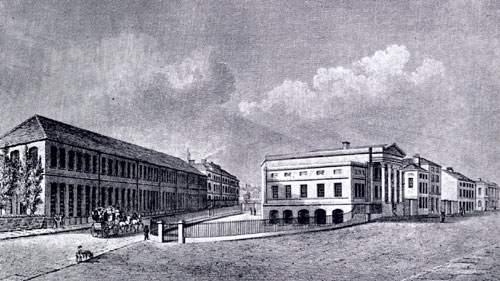 | |
| Changing Leeds | |
| City Square 1823 This picture is from the junction of Infirmary Street (left) and Park Row(right). The Cloth Hall is the long building on the left. The Court House is the porticoed building at the beginning of Park Row. Neither of these building are still standing. The Cloth Hall is now the site of the General Post Office.
"The Cloth Halls form a very interesting spectacle on market days. The coloured or MIxed cloth Hall is near the Commercial Buildings, in the busiest centre of Leeds. It is a quadrangular brick building 380 feet long by 200 broad, and contains nearly twofer thousand stalls, arranged in six streets, each of which has its own distinctive name. Each stall is about two feet in width, and is marked with the name of the occupant. The market days are Tuesday and Saturday. The White Cloth Hall is similar in style and arrangement to the hall just noticed. It is 300 feet long, and contains about twelve hundred stands in five streets. It opens as soon as the Couloured Cloth Hall closes, for the sale of cloth in an undyed state. | |
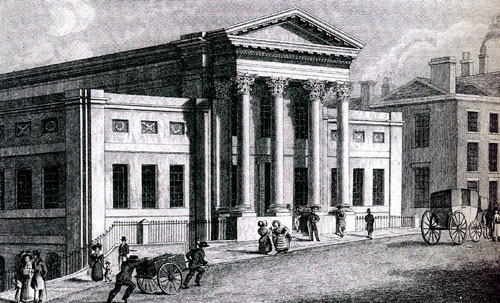 |
The Old Court House No longer standing |
| Changing Leeds | |
 |
City Square circa 1880 This photo was taken from the junction of Boar Lane and Park Row circa 1880. It is now the site of the General Post Office Changing Leeds. |
| Postcard collection of Maggie Land Blanck | |
 |
City Square Date unknown
|
| Postcard collection of Maggie Land Blanck | |
| Vicar Lane | |
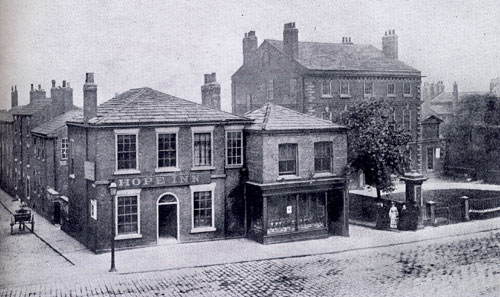 |
Vicar Lane 1872 |
| Changing Leeds | |
 |
Vicar Lane before it was widened.
|
| Changing Leeds | |
| Kirkgate Market | |

| Kirkgate Market Leeds is filled with arcades and markets. Most of the markets that exist today were built in Victorian times. This market was opened in 1904. |
| Photo Tom Blanck, 2002 | |

| Kirkgate Market, Leeds No postmark |
| Postcard collection of Maggie Land Blanck | |
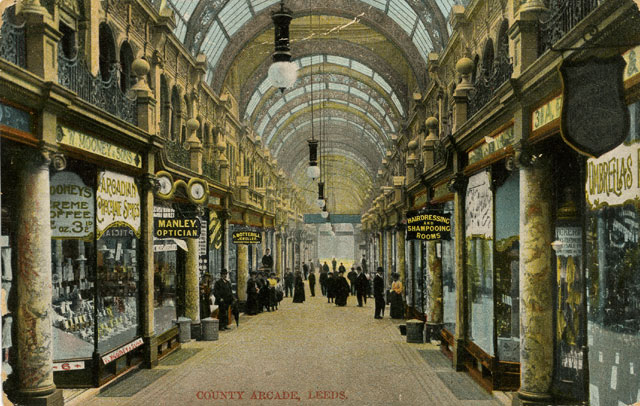
|
|
| Postcard collection of Maggie Land Blanck
County Arcade Leeds Not posted. | |
| The River Aire | |
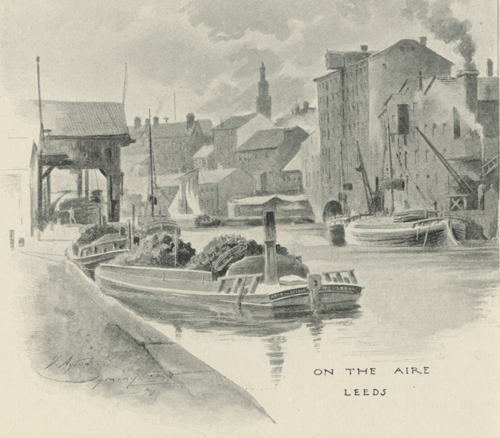 |
| Print collection of Maggie Land Blanck
|
| On the Aire, Leeds |
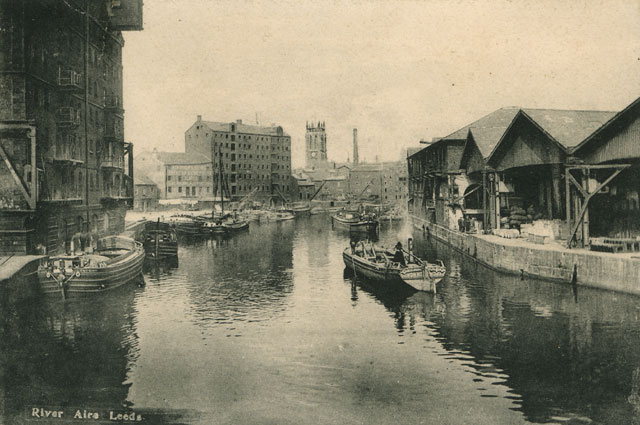
|
|
| Postcard collection of Maggie Land Blanck
Not posted. More images of the River Aire at Where the Lands Lived in Leeds | |
| The Central Infirmary, Leeds | |
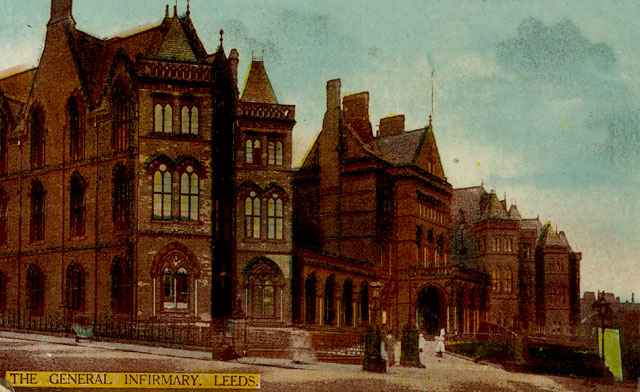
|
|
| Postcard collection of Maggie Land Blanck
On Great George Street, the Leeds General Infirmary opened in 1868. | |

|
|
|
Image courtesy of Eileen, June 2011 | |
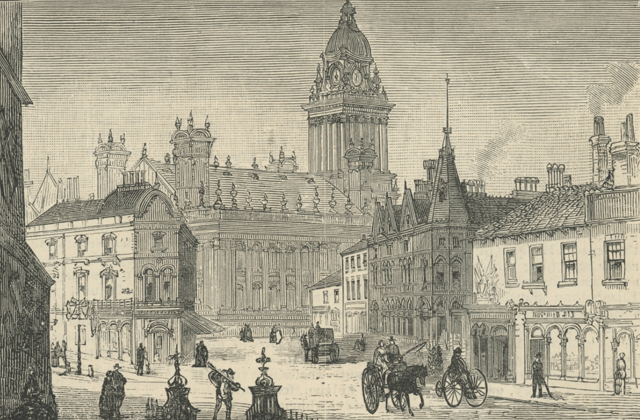
|
|
| Print collection of Maggie Land Blanck
THE LEEDS TOWN HALL FROM THE INFIRMARY GROUNDS, LEEDS Illustrated London News June 18, 1885
| |
| Mechanics Institure, Leeds | |

|
|
| Print collection of Maggie Land Blanck
MECHANICS INSTITUTE, LEEDS Illustrated London News June 18, 1885 Mechanics Institutes were established to further the education of the working man particularly in technical subjects that might improve his skills in the workplace. The were also thought to be a good alternative to spending time in the pubs. The Leeds Mechanical Institute later became part of Leeds College of Technology. The building, which is located at the corner of Rossingtonand Cookridge Streets, later became a theater and in currently the home of the Leeds City Museum. Leeds City Museum, Millennium Square, Leeds, West Yorkshire LS2 8BH, United Kingdom Phone 44 113 224 3732
| |
| Yorkshire College, Leeds | |

|
|
| Print collection of Maggie Land Blanck
YORKSHIRE COLLEGE, LEEDS Illustrated London News July 18, 1885
| |
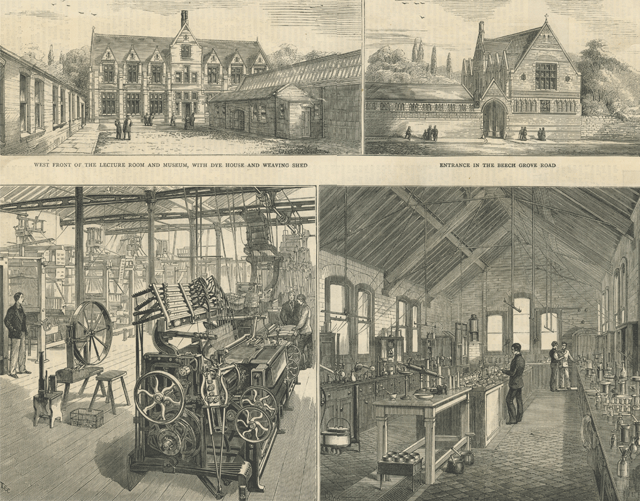
|
| Print collection of Maggie Land Blanck
NEW BUILDINGS OF THE TEXTILE DEPARTMENT OF THE YORKSHIRE COLLEGE, LEEDS The Graphic Dec 18, 1880 West Front of the Lecture Room and Museum, with Dye House and Weaving Shed, Entrance to Beech Grove Road, Interior of the Weaving Shed and Interior of the Dye House. |
| The Corn Exchange, Leeds | |

|
|
| Postcard collection of Maggie Land Blanck
Built in 1863 it is now a shopping center. See Corn Exchange Leeds
| |
| Park Row, Leeds | |
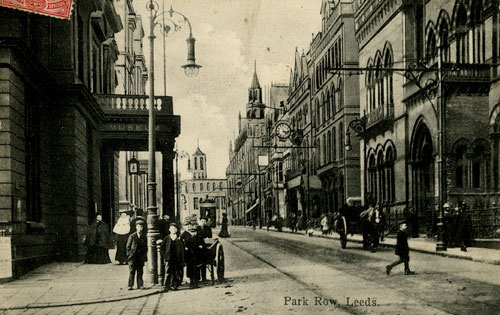
|
|
| Postcard collection of Maggie Land Blanck
Posted 1908 | |
 |
| Print collection of Maggie Land Blanck
|
| Leeds Looking Up Park Row, The Illustrated London
News May 30 1868
|
| Traces of old Leeds | |
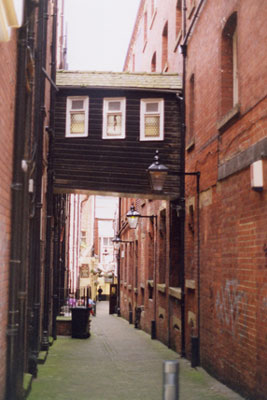
| Alley Way Most of the center of the city of Leeds is Victorian or modern. Here and there can be glimpsed remnants of the older city. |
| Photo Maggie Land Blanck, 2002 | |
| Kirkstall Abbey | |
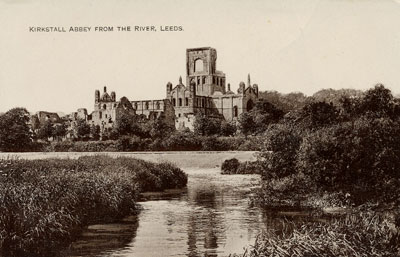
| Kirkstall Abbey from the river, Leeds No Postmark |
| Postcard collection of Maggie Land Blanck | |
| General Views of Leeds | |
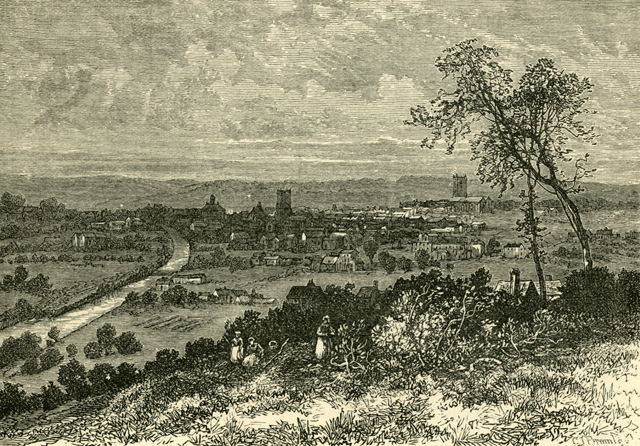 |
| Print collection of Maggie Land Blanck
|
| Leeds in the Early Part of the
Eighteenth Century (From Thoresby's "Ducatus Leodensis")
See Ralph Thoresby (1658-1725), antiquary and topographer. My thanks to Wayne Paton, April 2011, who corrected my misspelling of Thoresby's name and for pointing out the link.
|
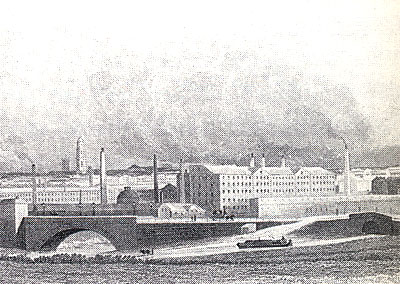 |
Western Panaramic View of Leeds by J. Rhodes, 1832 |
| Picture from Leeds Waterfront Heritage Trail by Peter Brears
| |
|
This view shows the Wellington Road bridges. The bridge on the left crosses the river, the bridge on the right crosses the canal. The large mill is the Bean Ing Mills, the worlds first integrated woolen factory. The entire textile process, from wool to finished cloth, was carried out in this mill. By 1797 the workforce of this mill was 1,200 and produced 4,000 broadcloths a year. This area is to the west of the Victoria Bridge. | |
 |
1834 Engraving of Leeds by Charles Cope Looking up river from below the church of St Peter's. By 1834 a great deal of industrialization had occurred. The air was bad and the water of the river was foul. |
| Leodis, Leeds Library | |

| View of Leeds from the Halifax New Road, 1846
Drawn by Henry Burns
|
| Leodis, Leeds Library | |
 |
| Print collection of Maggie Land Blanck
|
|
Leeds from Beeston Hall, The illustrated London News, Sept 11, 1858 Beeston Hall is south of Leeds so this images is looking to the north across Holbeck to Leeds. The tall white temple-like building to the right of center is the Town Hall which was opened in September 1858. In this image the clock tower is not finished.
|
 | |
| Changing Leeds | |
 |
|
| Leodis - a photographic archive of Leeds,
Leeds Library
| |
| Leeds, Yorkshire 1885 | |
 |
| Collection of Maggie Land Blanck |
| LEEDS
"The Aire below is doubly dyed and damned;
|
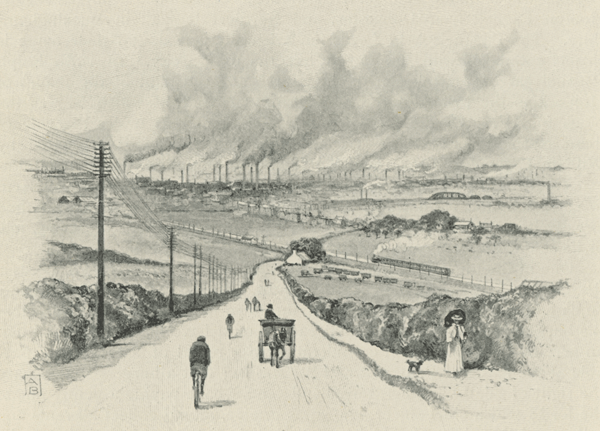 |
| Print collection of Maggie Land Blanck
|
| Leeds From John O'Gaunts Hill. The print, as I bought it, was not dated. However, the seller indicated that it came for a publication of the 1890s. "With the fifth part of A Picturesque History of Yorkshire (J. M. Dent and Co.).........some particularly charming sketches are given, notable that ot Ponetfract, of Leeds 'from John o'Gaunts hill'
John O'Guant was the duke of Lancaster and the father of Henry IV.
|
 |
|
| Postcard collection of Maggie Land Blanck
| |
| Leeds Steel Works, Yorkshire | |
| Meanwood ValleyLeeds | |

|
|
|
Image courtesy of Eileen, June 2011 In contrast to the soot and smog, there appear to have been some idyllic spots near Leeds. Meanwood Valley is currently a nature reserve. It is located some distance north of the city of Leeds. | |
| Other Images of Leads | |
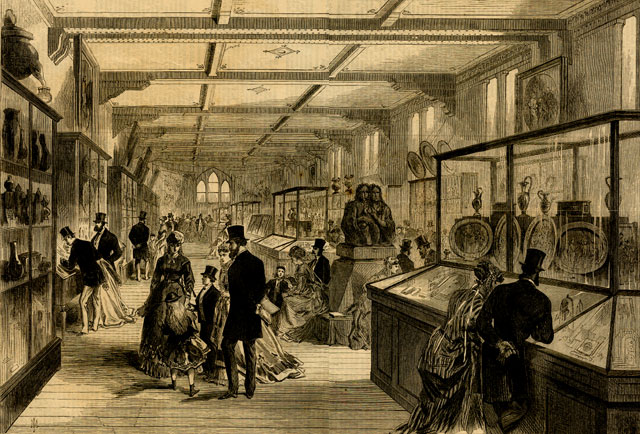 | |
| Print collection of Maggie Land Blanck
| |
| National Exhibition of Works of Art, Leeds: The Museum of Ornamental Art The Illustrated London News, August 8, 1868 THE LEEDS ART-EXHIBITION
"We present a view of the general aspect of that department of the national exhibition, now open at Leeds, in the new building of the Royal Infirmary, which contains the Museum of Ornamental Art. A few specimens of the contents of this museum, lent by their owners, will be the subject of forthcoming Illustrations. Three of these appear in this Number. One is the old sword which is said to have belonged to John Hampden. Its guard, handle , and pommel, are beautifully chiseled in steel with scenes from the life of King David: the cross hilt terminates in figures of Fame and Time; and other parts are decorated with nude figures and foliage of minute and exquisite design. This sword is the property of her Majesty the Queen. The Earl of Chesterfield has sent a lofty Chelsea vase, similar to the one preserved in Foundlings Hospital. It has a blue background, ornamented with gold and medallions, upon which are painted birds on one side of the vase and an elaborate scroll design, and there is a scroll on the top of the lid. The other illustration represents a fine silver ewer, designed by Flaxman, and manufactured in 1807. Its handle is in the form of a satyr, whose body is girdled with a wreath of vine leaves and grapes. It was contributed by Messrs. Hunt and Roskell. "The people in this print do not represent the working class of Leeds to which the Lands belonged
| |
| Woodhouse Moor, Leeds | |
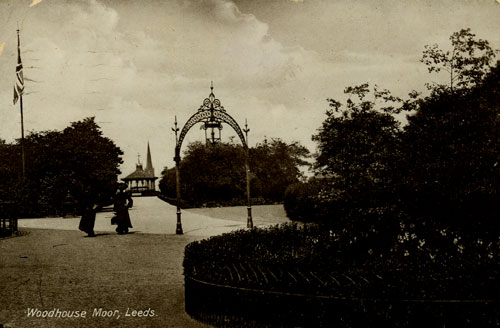
|
|
| Postcard collection of Maggie Land Blanck
| |
| Seven Arches Near Leeds | |
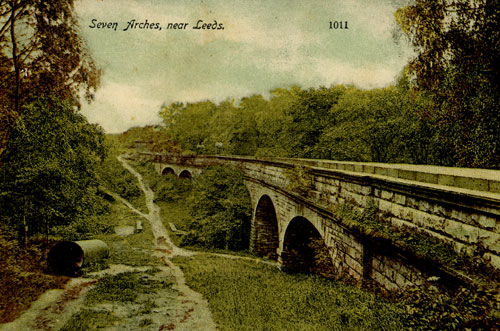
|
|
| Postcard collection of Maggie Land Blanck
| |
| Roundhay Park, Leeds
Roundhay Park is one of the biggest city parks in Europe. Originally a hunting park it passed though various hands from the 13th century until 1871 when it was bought by a group that included the mayor of Leeds. The Leeds City Council bought it for the same amount and it was given to the people of Leeds in 1872. The major problem as a city park was that Roundhay was located 3 miles from the center of Leeds. In 1891 the park was serviced from the city of Leeds by trolley.
|
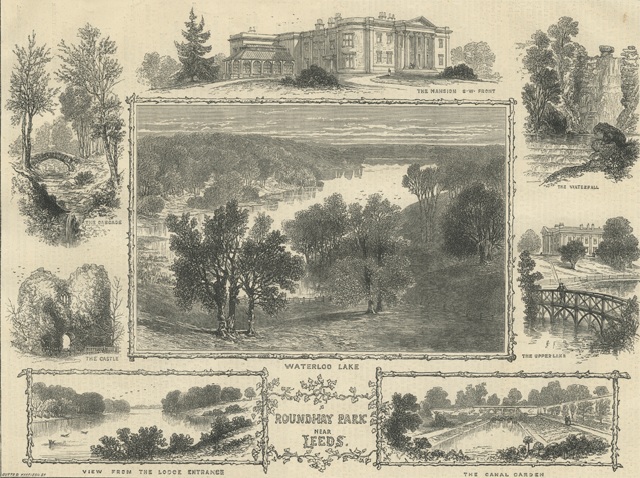
|
| Print collection of Maggie Land Blanck
Roundhay Park Near Leeds The Graphic September 21, 1872
|
| If you have any suggestions, corrections, information, copies of documents, or photos that you would like to share with this page, please contact me at maggie@maggieblanck.com |
| Leed Library |
| RETURN TO TOP OF PAGE |
| Please feel free to link to this web page.
|
| ©Maggie Land Blanck - Page created 2004 - Latest update, June 2020 |